Advantages of our products
Save up to 46% energy
Radiator thermostats allow you to expend exactly the amount of energy needed to this moment to maintain a comfortable room temperature. Different thermostatic elements cope with this task in different ways. Compared to a manual control valve, liquid or paraffin filled thermostats save 31%, and gas filled thermostats save 36%. Using Danfoss living eco electronic radiator thermostats allows you to save up to 46% of heating energy.
*According to a study conducted by the Rhine-Westphalian University of Technology,
Aachen, Germany.
Fast reaction
Danfoss RA series thermostats are equipped with a gas-filled bellows. The heat capacity of gas is significantly less than that of liquid and, especially, paraffin. As a result, gas-filled thermostats respond much faster to changes in room temperature. That's why Danfoss thermostats maintain temperature more accurately and provide greater energy savings. Radiator thermostats with a gas-filled thermostatic element (“gas”) are patented and manufactured only by Danfoss.
Easy installation and setup
The adapter set will allow you to install the Danfoss living eco thermostat on most thermostatic valves on the market. See for yourself by watching this short video.
Reliable performance
Danfoss thermostats are fully adapted for operation in Russian conditions. More than 40 years of experience in operating thermostats in Russia allows us to confirm this. For the first time in Moscow, Danfoss thermostats were installed in 1964 at the Rossiya Hotel, where they served until its demolition
Safety of thermal heads for heating radiators
Thermal heads for Danfoss living eco heating radiators have a child lock function. Exploring the world around us will be safe even for the little ones.
Comfort in all rooms
The amount of heat each room needs varies throughout the day. In the morning the sun shines through the windows east side at home, at noon on the south, in the evening on the west. If you control the heating of the entire house based on the temperature in one room, the temperature in the remaining rooms will change throughout the day.
Now you can buy a thermostat with a modern design
Red Dot is a world-famous “quality mark” in the field of industrial design. Only products that are exceptional in terms of aesthetics and functionality are awarded this high rating. In 2010, Danfoss was awarded the Red Dot award for the development of its living thermostats.
Every owner own home outside the city or within its borders, it strives to make the heating system autonomous and independent of human work. It should be easy to control and functional, which will guarantee comfort. Previously, a tap for all pipe lines was considered a convenience; today, a thermostat for a heating radiator has become commonplace. It is with the help of this device the system can be made more practical and flexible.
General characteristics
Through a small and simple device, which is called a thermostat or thermostat, can increase the flexibility of controlling your heating system. If you install this device, then the owner will have the opportunity to achieve an increase in efficiency heating radiators By reducing the costs that go towards paying for heating, among other things, you will endow the system with the qualities of autonomy. Whatever device the thermostat for the heating radiator has, it is capable of analyzing the temperature external environment and control the amount of heat generated. The design consists of two main elements, including a thermostatic valve and a thermal head. Modern market there are many models that are manufactured by different manufacturers, however, all options can be divided into two categories: electronic or automatic, and mechanical or manual.
Description of electronic thermostats
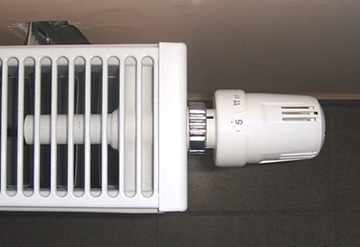
If you decide to purchase a thermostat for a heating radiator, you may prefer electronic variety, which is more modern and sophisticated. With it you can make the heating system more flexible, control the temperature on a specific radiator and control by different mechanisms systems, namely mixers, pumps, valves and other components. Electronic thermostat for a heating radiator is more complex compared to the mechanical option. The first of those mentioned has a built-in or remote system that is capable of measuring the temperature of the external environment in a certain area where the device is located. This element of the thermostat is called a sensor and it is due to it that proper operation is ensured.
Types of electronic thermostats
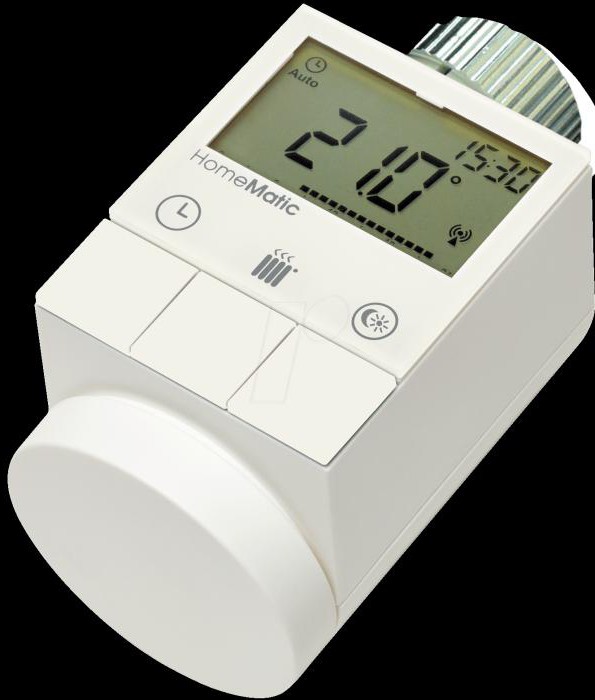
If you decide to choose an electronic thermostat, you should know that such devices are divided into two categories, the first of which is digital, the second is analog. Digital models are in greatest demand among buyers, which, in turn, can be divided into two categories: with open logic and closed. Devices with closed logic are not able to change the operating algorithm. They are unable to respond to changes in the external environment and maintain the temperature set by the consumer. If you are looking for an electronic thermostat for a heating radiator with open logic, you should know that such devices are quite rare to find on sale. They independently react to changes environment and have the ability to select the control program. Such devices have numerous customizable parameters that can complicate the operation of the device. As a rule, many of them require the user to have certain knowledge, which is why such units are used in the industrial field.
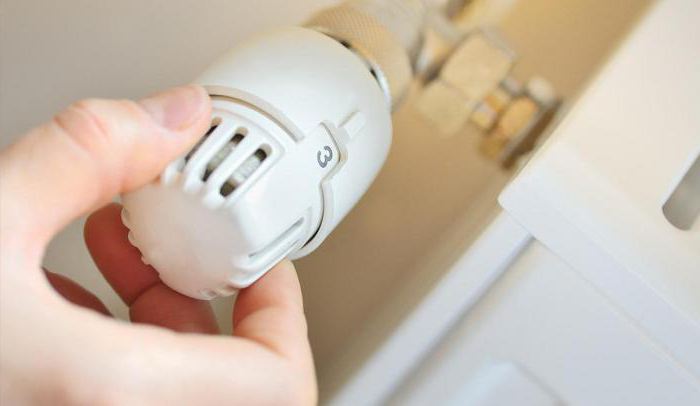
Before installation is carried out, you should make the right choice. In addition to the type of device when choosing, you should pay attention to additional characteristics, namely liquid or gas, built-in or remote device in front of you. It is also important to take into account the hydraulic resistance of the system.
Features of built-in and remote thermostats

The most popular devices today are those that have built-in sensors. They are simple and compact. But such thermostats have a serious drawback, which is that they respond to temperature changes only in the immediate vicinity of the heating radiator. For this reason, recently thermostats that are located at some distance have become quite popular. Such devices operate on the principle of transmitting valve control signals. It makes sense to use a similar thermostat with an indicator screen for heating radiators in cases where the width of the window sill is more than 22 centimeters, and heating device located 10 centimeters or less. It is advisable to use the thermostat described above when the battery is located in a niche. We are talking about a radiator, in front of which there is a thermostat. This statement is true for the case when the depth of the battery is more than 15 centimeters. Furniture and curtains can block air flow to the thermostat.
Hydraulic resistance
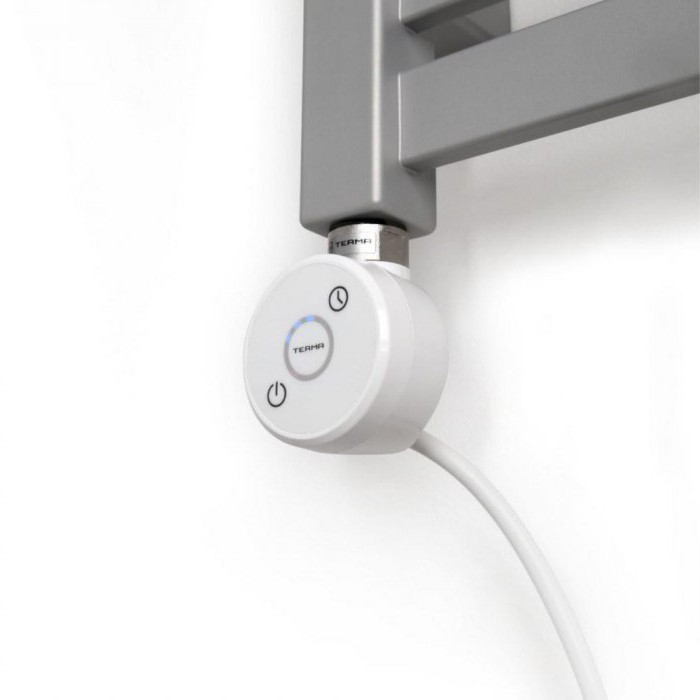
If you want to purchase a thermostat for a heating radiator with a remote sensor, then it is important to take into account the heating system, the latter of which can be two- or one-pipe. Replacement devices have the appropriate classification. As a reason this division the load appears in two-pipe system, which is much larger compared to that present in the single-pipe. Thus, a thermostat for a two-pipe line must have more impressive hydraulic resistance. If you install a two-pipe unit instead of a single-pipe one, then heating system will work stably. Reverse replacement cannot be allowed, since a lack of hydraulic resistance will cause a loss of power, a decrease in efficiency and premature failure of the internal mechanism.
Types of thermostats depending on the working environment
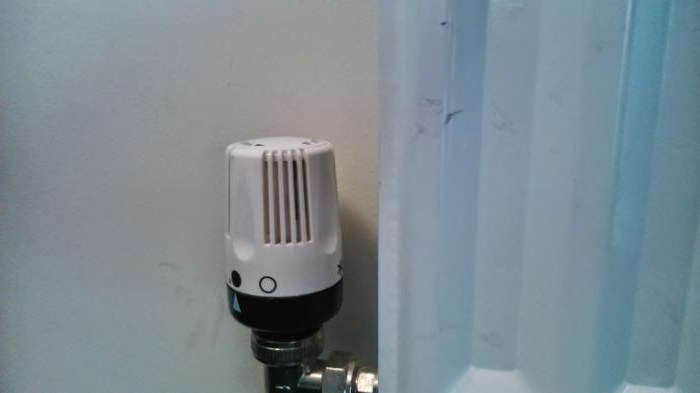
If you decide to choose a thermostat for an Oventrop heating radiator, then you need to know that such devices are divided into types depending on the operating environment, so thermostats can be ready-made or liquid. In the latter case, the accuracy of the measured values will be significantly higher. Such devices are not capable of transmitting pressure to controlled mechanisms inside a corrugated cylinder. But models with gaseous media have other significant advantages, among them a quick response to temperature changes, which increases the efficiency of heat supply. An additional advantage is that the gas condenses at some distance from the valve in the cooled zone of the device. This indicates that the reaction rate increases, because it practically does not depend on the temperature in the coolant.
Even a virtuoso stoker will never be able to constantly keep the temperature in the house at the same level.
What can we say about city apartments, where little depends on the residents? However, temperature can be adjusted small device– thermostat for heating radiator!
And that's not the only thing he can do! How a thermostat works, which one is best to buy and how to install it. More details about everything.
 A thermostat is a device that is mounted at the inlet of the radiator and regulates the flow of coolant passing into the battery.
A thermostat is a device that is mounted at the inlet of the radiator and regulates the flow of coolant passing into the battery.
The device will provide a comfortable temperature, and if meters are installed or autonomous heating, it will also save money.
In addition, the thermostat also performs the function of a locking valve. This means that, if necessary, the apartment owner can disconnect the battery from the common riser.
The benefits of installing a thermostat will be most felt in rooms where the temperature fluctuates throughout the day - in the kitchen, where the windows face south, as well as in the bedroom.
I can only add that thermostats small size differ in design and you can choose a model that will not spoil the interior.
Types of heating regulators
There are two criteria by which thermostats are distinguished. According to the substance that fills the thermal head:- Liquid.
- Gas-filled.
Most often, the first thermostats are found on sale. Each of them has pros and cons. Liquid ones are more accurate, but gas ones are more reliable and faster.
Based on how the temperature is adjusted:
- Mechanical.
- Electronic.
Mechanical
A mechanical thermostat does not require external energy. Its operation is based on the physical ability of substances to expand when heated (the principle of its operation will be described below).
A mechanical thermostat is right for you if it is important to you:
- save on the cost of the device;
- ease of use;
- independence from external energy;
- and, if you are satisfied with manual temperature adjustment, and there is no need to change t while no one is at home.
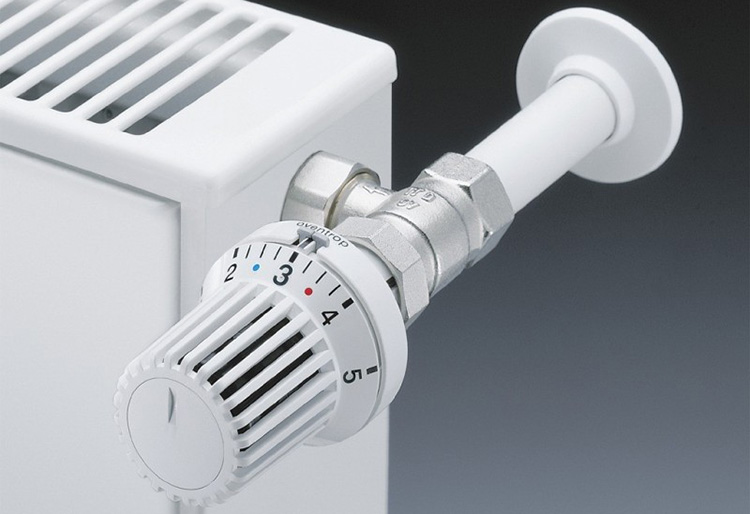
Mechanical thermostat
Electronic
An electronic thermostat (or automatic) for a heating radiator controls the heat supply without human intervention. Instead of a control knob, such devices have an LCD display or a keypad.
The ET is equipped with a remote or built-in sensor that takes temperature data and sends it to the thermostat. The ET has the ability to program the room temperature for certain periods of time (hours, days).
- Lower the temperature in the house when the owners are away and warm up the room before they return.
- Hold in non-residential premises minimum indicators so that the heating does not freeze or the flowers do not die.
- Install comfortable temperatures for day and night, etc.
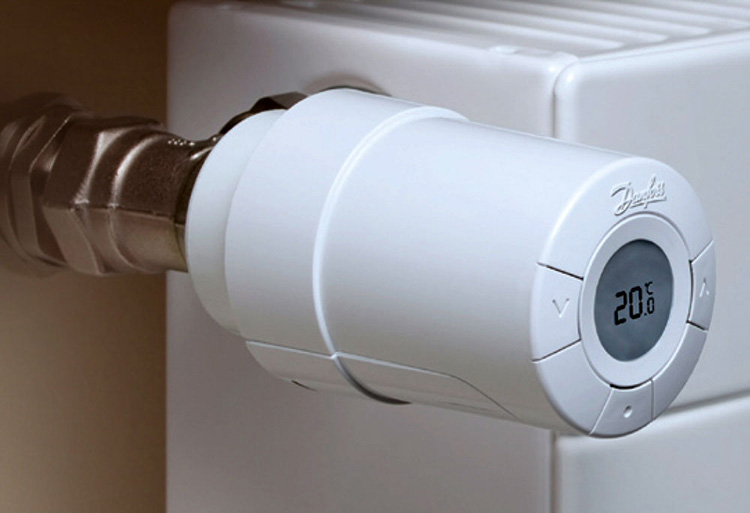
Electronic programmable thermal head on the radiator
There are regulators:
- With closed logic.
- With open logic.
The first option has specific specified indications, and a person controls only the basic parameters. Suitable for home use.
In the second case, the device adapts itself to any system. Most often installed on industrial enterprises– Setting up such a mini-computer requires special skills and takes quite a lot of time.
Electronic devices need batteries. Charger for them, as a rule, is included in the kit.
Design
A thermostat is a thermostatic valve and a thermal head, inside of which there is a cylinder filled with liquid or gas (depending on whether the device is liquid or gas-filled). The cylinder is called a bellows. When the surrounding temperature increases, the volume of liquid (or gas) also increases.
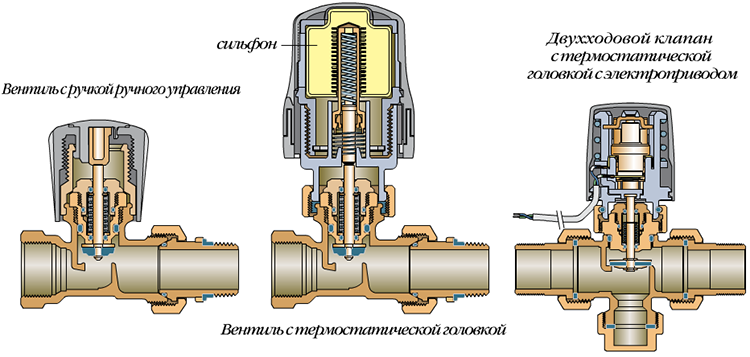
Automatic thermostat design
The bellows expands along with the filler and moves the spool, which in turn affects the valve that regulates the flow to the radiator.
Manufacturers of thermostats claim that bellows are a highly reliable element that can withstand hundreds of thousands of compressions and expansions, which means they will last for decades!
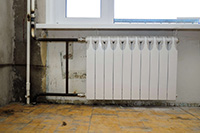 Before installing heating radiators, it is necessary to calculate the required number of sections. Many errors arise due to incorrect interpretation of the manufacturer's instructions. - what parameters need to be taken into account and how to make the most accurate calculation.
Before installing heating radiators, it is necessary to calculate the required number of sections. Many errors arise due to incorrect interpretation of the manufacturer's instructions. - what parameters need to be taken into account and how to make the most accurate calculation.
Read about how to properly drain water from a water heater. When should this be done?
The thermostat is installed not only on the heating radiator, but there are also thermostats for infrared heater. Here you will find types of devices and an overview of prices.
How to choose the right thermostat
Some selection parameters are beyond your control; they are related to the technical data of the system. This:
- Valve dimensions. It is determined by the size of the plug in the radiator or pipe, depending on where it will be installed.
- For which system - one or two pipes? In the latter case, the device will experience a large load, so thermostats with high hydraulic resistance are specially produced. If you use an unsuitable device, this will reduce power and speed up its failure.
- The specifications also indicate that for a system with circulation pump The regulator is designed or not.
Other features can be chosen at your discretion:
- Mechanical or electronic– for some people the funds allow them to buy more expensive models thermostat for a heating radiator, but even they may prefer an easy-to-use manual option.
- Liquid or gas– also a matter of taste, since both options do their job perfectly.
- Temperature. Pay attention to the range in which the temperature can be adjusted. Conventional thermostats operate between 5 and 30 degrees. Step – 1 degree. There are other options.
Even before purchasing the device, choose the place where it will be placed, then you will be able to know in advance which version is better - straight or at an angle of 90 degrees.
Installing a thermostat on a heating radiator
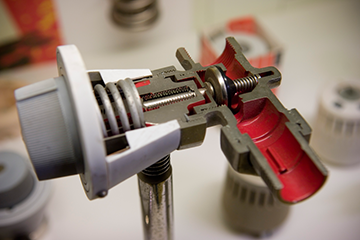 First you need to decide on the location of the device.
First you need to decide on the location of the device.
A possible place is the radiator itself, but only if it is not covered by curtains, grilles, etc. Clutter can negatively impact measurement accuracy.
However, this is not a problem if you install a thermostat with a remote sensor that will take temperature readings where it is convenient for you. Another placement option is in front of the battery on a horizontal section of the pipe.
The device readings may be distorted if the thermostat is influenced by external factors:
- Sun;
- drafts;
- refrigerator, stove or other electrical appliance nearby.
This must be taken into account when choosing a location for the regulator.
If the heating system is single-pipe, a bypass is installed at a short distance from the radiator (a jumper that will act as a small circuit in the event of the radiator being disconnected from the system).
In a two-pipe system, the regulator is installed on the upper supply pipe.
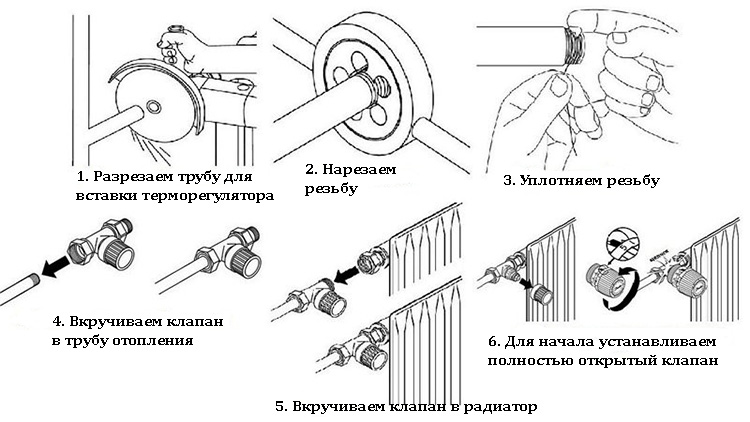
Connection diagram of the thermostat to the battery
Installation method in the hole on the radiator. Before starting installation work, turn off the supply riser. Procedure for aluminum and bimetallic radiators:
- Drain the water from the radiator by opening the inlet valve. Remove the valve.
- If the system is single-pipe, make a bypass. With a two-pipe system, this point is skipped.
- Install the thermostat in threaded connection battery holes.
- To seal the connection, use FUM tape (wind along the thread).
- The arrow will tell you which side to install the device on - it should coincide with the direction of water movement.
With a thermostat you will feel comfortable throughout heating season. At the end of the season, you need to switch the device to “storage” mode - turn the device counterclockwise, i.e., open it completely. This will help prevent sediment from forming on the regulator parts.
 A device as simple as it seems, like a heating radiator, actually has a number of important parameters things you need to know to choose the best option. Comparative characteristics main types.
A device as simple as it seems, like a heating radiator, actually has a number of important parameters things you need to know to choose the best option. Comparative characteristics main types.
How to choose the right one bimetallic radiators heating, read the topic.
Video on the topic





